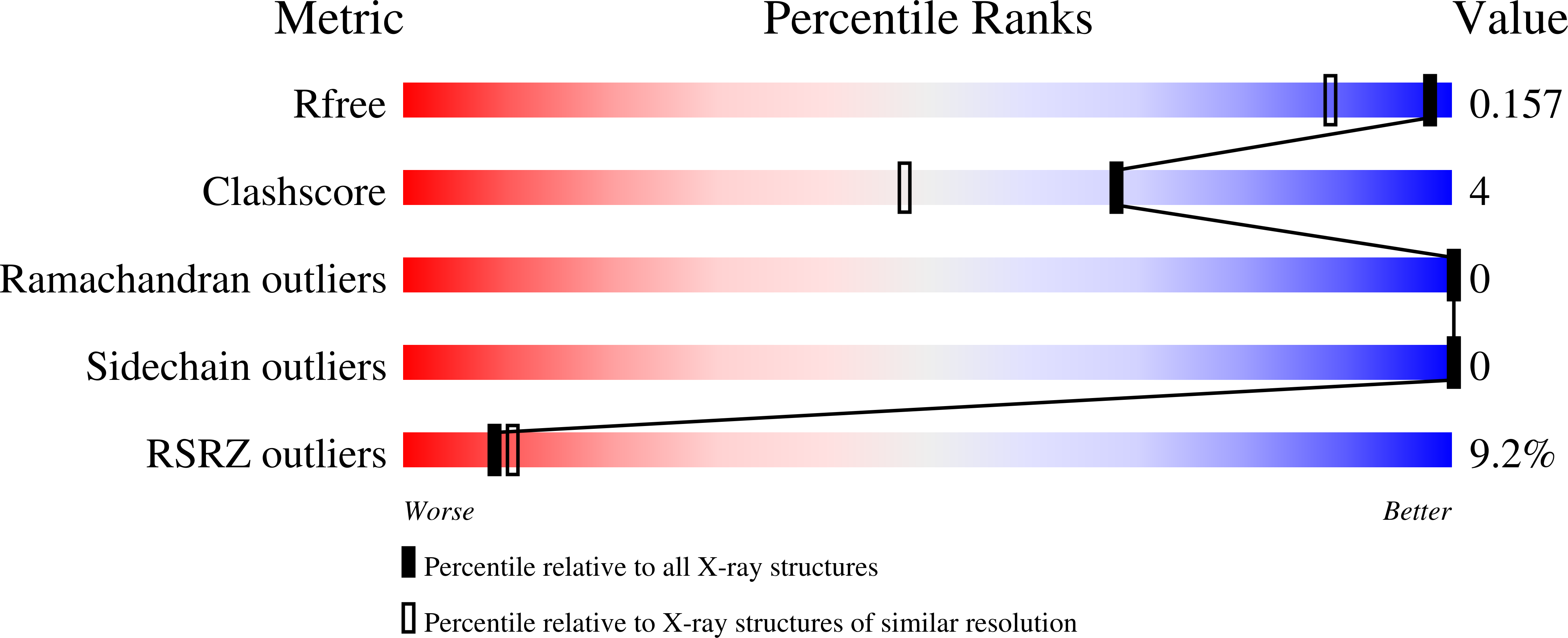Thermodynamic system drift in protein evolution.
Hart, K.M., Harms, M.J., Schmidt, B.H., Elya, C., Thornton, J.W., Marqusee, S.(2014) PLoS Biol 12: e1001994-e1001994
- PubMed: 25386647
- DOI: https://doi.org/10.1371/journal.pbio.1001994
- Primary Citation of Related Structures:
4LY7 - PubMed Abstract:
Proteins from thermophiles are generally more thermostable than their mesophilic homologs, but little is known about the evolutionary process driving these differences. Here we attempt to understand how the diverse thermostabilities of bacterial ribonuclease H1 (RNH) proteins evolved. RNH proteins from Thermus thermophilus (ttRNH) and Escherichia coli (ecRNH) share similar structures but differ in melting temperature (T(m)) by 20 °C. ttRNH's greater stability is caused in part by the presence of residual structure in the unfolded state, which results in a low heat capacity of unfolding (ΔCp) relative to ecRNH. We first characterized RNH proteins from a variety of extant bacteria and found that Tm correlates with the species' growth temperatures, consistent with environmental selection for stability. We then used ancestral sequence reconstruction to statistically infer evolutionary intermediates along lineages leading to ecRNH and ttRNH from their common ancestor, which existed approximately 3 billion years ago. Finally, we synthesized and experimentally characterized these intermediates. The shared ancestor has a melting temperature between those of ttRNH and ecRNH; the T(m)s of intermediate ancestors along the ttRNH lineage increased gradually over time, while the ecRNH lineage exhibited an abrupt drop in Tm followed by relatively little change. To determine whether the underlying mechanisms for thermostability correlate with the changes in T(m), we measured the thermodynamic basis for stabilization--ΔCp and other thermodynamic parameters--for each of the ancestors. We observed that, while the T(m) changes smoothly, the mechanistic basis for stability fluctuates over evolutionary time. Thus, even while overall stability appears to be strongly driven by selection, the proteins explored a wide variety of mechanisms of stabilization, a phenomenon we call "thermodynamic system drift." This suggests that even on lineages with strong selection to increase stability, proteins have wide latitude to explore sequence space, generating biophysical diversity and potentially opening new evolutionary pathways.
Organizational Affiliation:
Department of Chemistry, University of California, Berkeley, Berkeley, California, United States of America; Institute for Quantitative Biosciences (QB3), University of California, Berkeley, Berkeley, California, United States of America.















